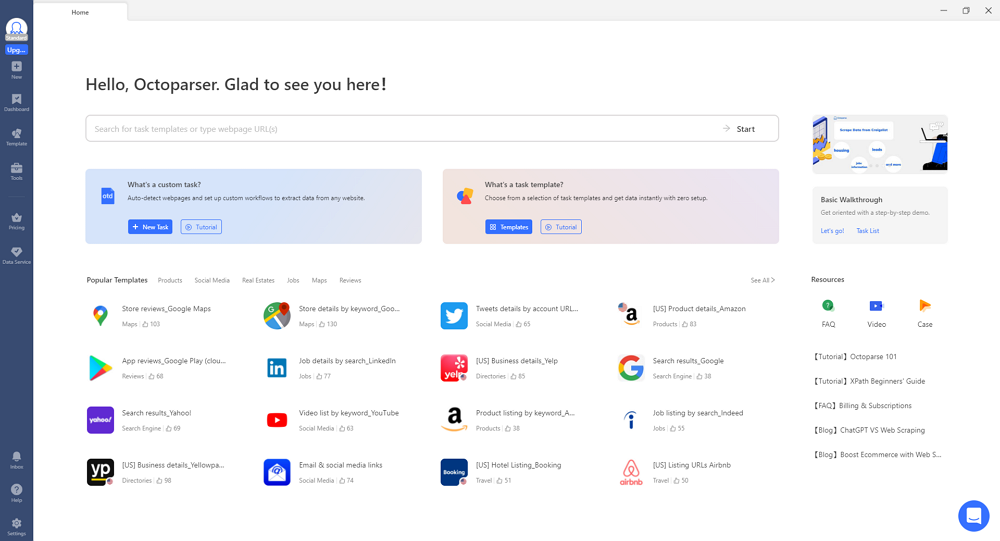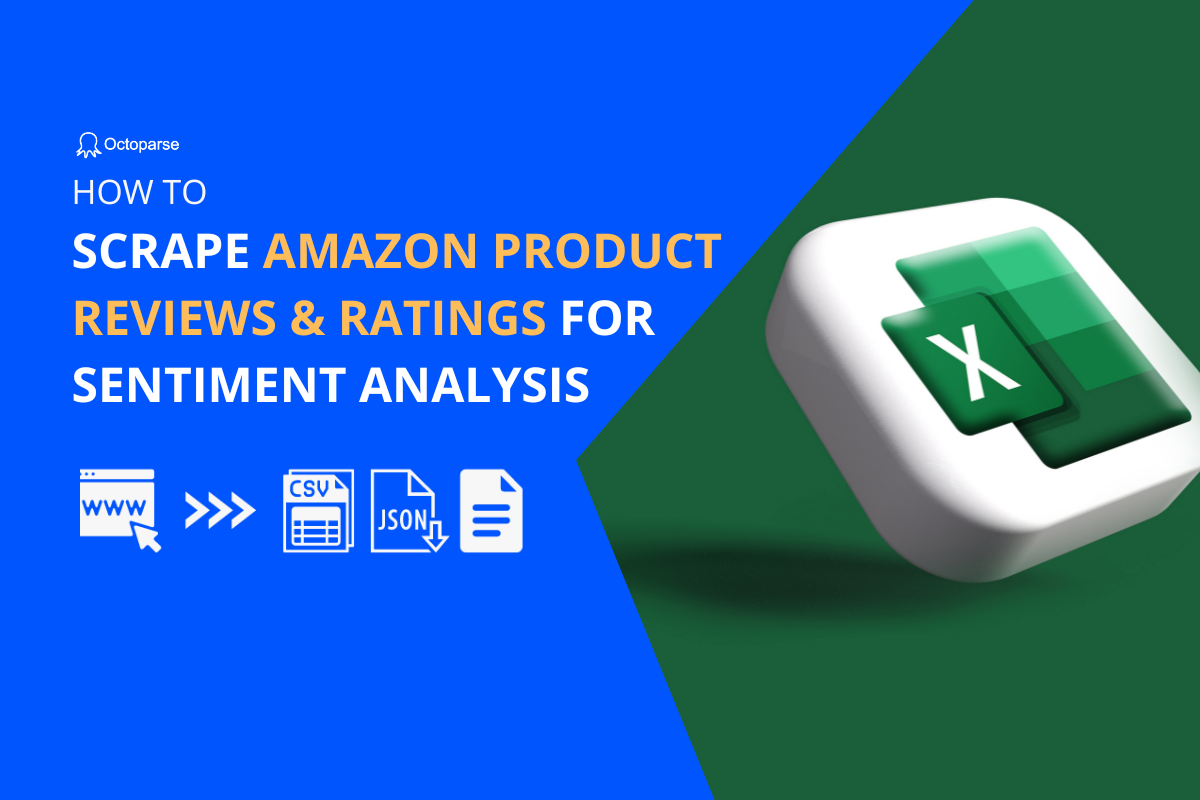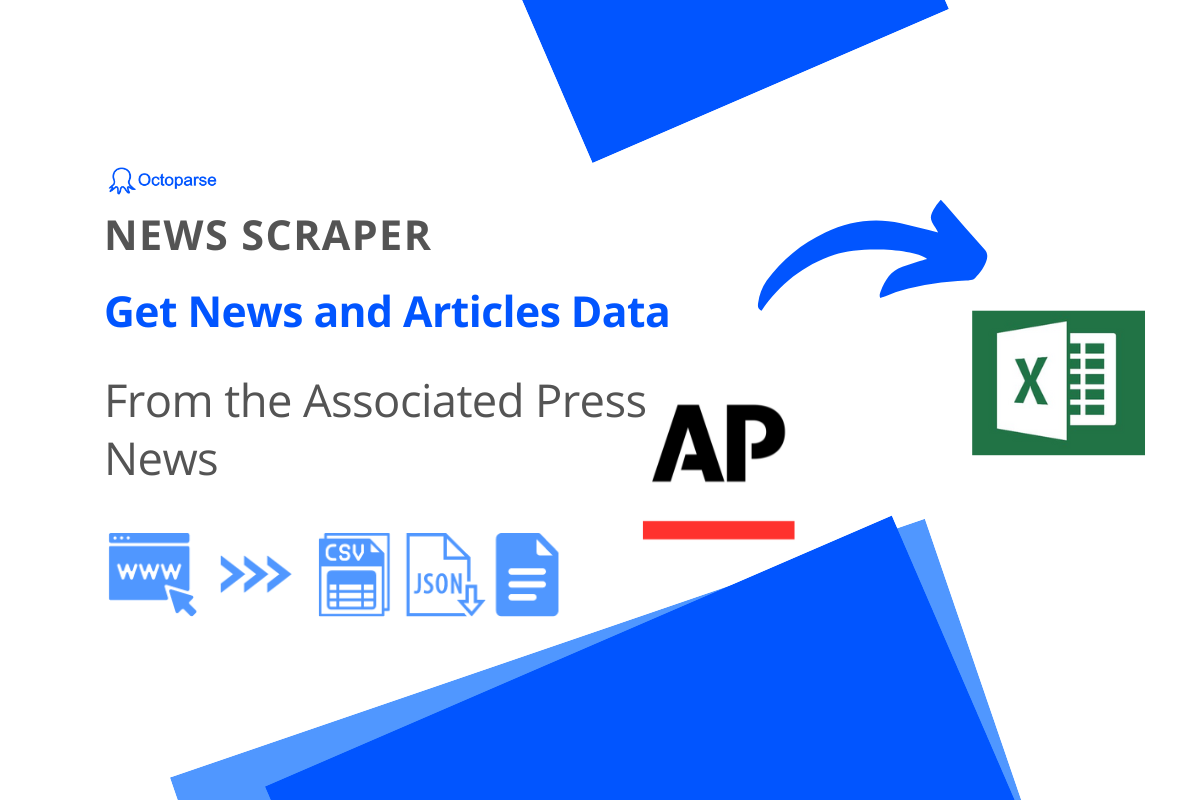Understanding the emotion of the general public has become essential for organizations in the fast-paced digital environment of today. Sentiment analysis, a powerful method for determining public sentiment from text data, has revolutionized marketing tactics. Businesses may get insightful information via sentiment analysis, make data-driven choices, and adjust their strategies to better suit client preferences.
But how can you compile the enormous news data that sentiment analysis requires? In this post, we’ll go into the field of news sentiment analysis and demonstrate how to use Octoparse, a flexible web scraping tool, to collect news data.
What is sentiment analysis and why is it important?
Sentiment analysis, often known as opinion mining, is the act of evaluating whether a piece of text has a positive, negative, or neutral emotional tone. It enables organizations to obtain a better knowledge of client feelings, allowing them to improve their goods, services, and marketing tactics. Companies may respond quickly, fix concerns, and improve brand image by spotting positive and negative opinion patterns.
How does sentiment analysis work?
Sentiment analysis is a procedure that analyzes text data and determines the emotional tone contained within it using natural language processing (NLP) tools. It involves several steps, including preprocessing the text by reducing noise, tokenizing the text into individual words, and giving emotion ratings to the terms. These ratings are then added together to establish the overall tone of the text.
Preprocessing and Noise Removal
Preprocessing the text to eliminate noise and extraneous information is the initial stage in sentiment analysis. Special letters, punctuation, and stopwords (frequently used words like “the,” “and,” “is,” and so on) that do not contribute significantly to sentiment analysis are often removed. By cleaning the text and removing noise, the analysis may zero in on the crucial sentiment-bearing words and phrases.
Tokenization and Word-Level Analysis
The method of tokenizing involves separating the text into tokens, or individual words. For sentiment analysis, each token stands for a single unit of meaning. Tokenization enables detailed sentiment analysis by looking at the sentiment ratings given to each word. Sentiment lexicons or sentiment analysis algorithms that have been trained on labeled data can produce these scores.
Sentiment Scoring and Aggregation
Sentiment scores, such as positive, negative, or neutral, are given to words in sentiment analysis to represent their polarity. These ratings may be determined using machine learning algorithms or established sentiment lexicons. An overall sentiment score may be derived by adding together the sentiment ratings of all the words in a text. This rating reflects the tone of the text and aids in determining whether it is most favorable, negative, or neutral.
Role of Data in Sentiment Analysis
Data are important to sentiment analysis. Machine learning models are trained on large, labeled datasets in order to identify trends and rate the emotion of words. These models pick up knowledge from examples and come to recognize the tone that various words and expressions communicate. The capacity to develop precise sentiment analysis models that can work in a variety of domains and scenarios is made possible by the availability of varied and representative training data. Additionally, methods like sentiment lexicon expansion may be utilized to employ data to enhance sentiment analysis. The analysis may be adapted to particular needs by enhancing current sentiment lexicons with the domain- or industry-specific sentiment data. Additionally, when fresh data becomes available, data-driven methodologies enable the ongoing enhancement and refining of sentiment analysis models.
What Can You Gather from News?
The news provides a wealth of data for sentiment analysis. Businesses may learn more about consumer behavior, brand perception, and market trends by collecting news data. Some instances of what you may get from the news for sentiment analysis are as follows:
Public Opinion
Public opinion on a variety of subjects, including politics, social concerns, and current events, is frequently reflected in news stories. Businesses may assess public perception, spot emerging trends, and evaluate the effects of their activities by studying news sentiment.
Brand Perception
You may track brand sentiment by scraping news stories about your brand or sector. To maintain a great brand image, you may monitor how your company is being represented in the media, spot possible problems, and take proactive steps.
Market Trends
For information on market trends and consumer preferences, check out Market Trends News. You may spot changes in customer mood, keep one step ahead of the competition, and make data-driven choices by monitoring sentiment in news stories about your sector.
How to Scrape News Data with Octoparse
Octoparse is a user-friendly web scraping tool that can simplify the process of extracting news data for sentiment analysis. If you haven’t used Octoparse before, begin by downloading and installing the software on your device. Once installed, create a free account to access Octoparse’s powerful features.
Creating a New Task
When you have identified the news website you want to scrape, copy its URL and paste it into the Octoparse search bar. Click “Start” to create a new scraping task.

Auto-Detection Process
Octoparse features a built-in browser that quickly loads the website within the software. After the page has loaded, click on “Auto-detect webpage data” in the Tips panel. Octoparse will scan the page and automatically suggest potential data fields based on its analysis.
Data Preview and Customization
After the auto-detection process, you can preview the suggested data fields at the bottom of the screen. Octoparse will also highlight the detected data on the page for easy verification. You have the flexibility to rename data fields or delete any unwanted fields using the Data Preview panel.
Building the Workflow
Once you have confirmed the desired data fields, it’s time to build your scraper. Click on “Create Workflow,” and a workflow interface will appear on the right-hand side of the screen. This workflow displays each step of the scraping process, allowing you to preview and ensure the scraper is functioning as intended.
Launching the Scraper and Exporting Data
After double-checking the details, you can initiate the scraping process by clicking “Run.” Octoparse provides options to run the task locally on your device for smaller projects. For larger or recurring scraping tasks, you can leverage Octoparse’s cloud servers. By scheduling the task on the cloud, Octoparse will automatically extract the data for you.
Once the task has been processed, you can export the scraped data in various formats such as Excel, CSV, or JSON files. Alternatively, you can export the data directly to a database platform like Google Sheets for further analysis and utilization.
Tips and Best Practices for News Data Scraping
Select Reliable Sources: To preserve the caliber and accuracy of the collected data, make sure the news sources you scrape are credible and reliable.
Optimize Extraction Rules: Make minor adjustments to Octoparse’s extraction rules to ensure that the pertinent data is correctly captured. Review and update your scraping activities often to take into account alterations to the website’s layout.
Respect Website Policies: Follow website policies and standards while scraping news data. Be careful you abide by the terms of service and copyright laws.
Use Proxies: Consider using proxies to get around IP banning or rate limits that websites impose. Your scraping requests might be spread across several IP addresses with the aid of proxies.
Schedule Regular Scraping: Establish a timetable for routine news data scraping to make sure you get the most recent data for sentiment analysis.
Conclusion
News sentiment research is critical in determining marketing strategy and commercial choices. You may gain significant insights into public opinion, brand perception, and market trends by scraping news data using technologies like Octoparse. Businesses may make data-driven choices, keep ahead of the competition, and modify their methods to match customer expectations by combining sentiment analysis and web scraping. So, enter into the realm of sentiment analysis with Octoparse, leverage the power of web scraping, and discover the untapped potential of news data for your business’s success.




